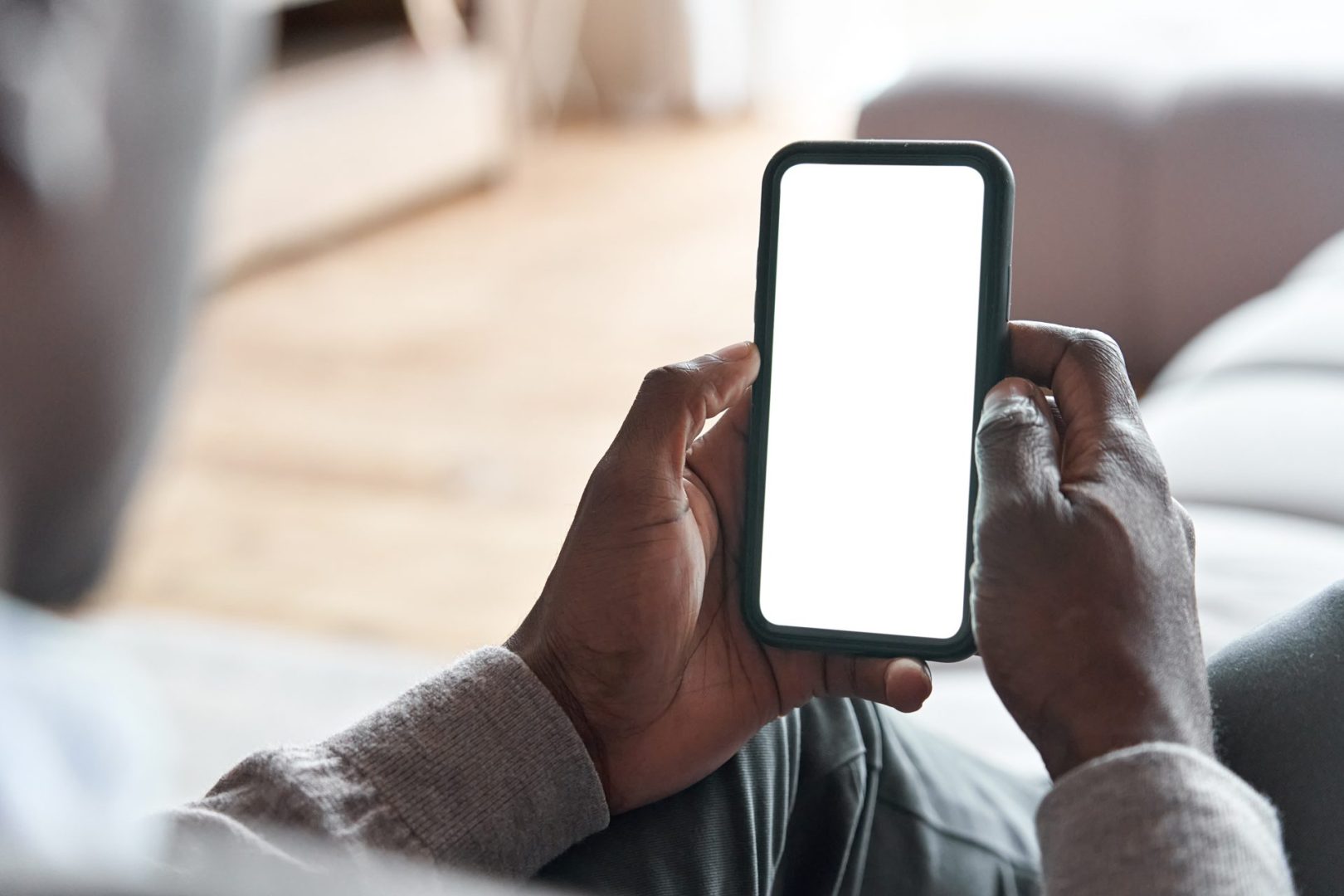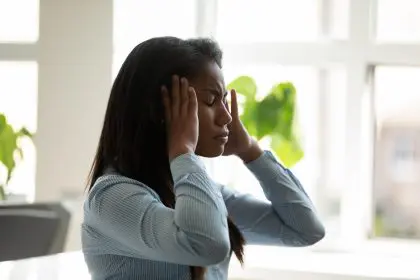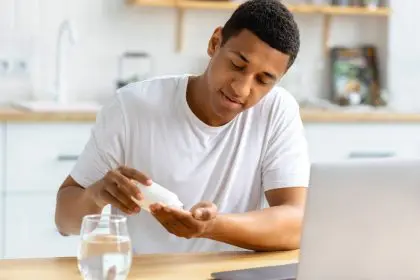A peculiar modern ailment has emerged in medical offices worldwide as patients present with thumb pain, stiffness, and mobility issues without obvious injury. The seemingly innocuous smartphone—now practically an extension of the human body—creates biomechanical stress that our thumbs never evolved to handle. This device-related stress manifests in multiple progressive conditions that develop so gradually most users fail to make the connection until significant discomfort develops. Understanding the specific mechanisms of this damage reveals effective prevention strategies that allow continued device use without compromising long-term hand health.
The unnatural movement patterns
The human thumb evolved primarily for gripping and stabilizing objects rather than the rapid, repetitive movements smartphones demand. This evolutionary mismatch creates biomechanical stress through several specific movement patterns that occur during typical device use. The frequent stretching to reach distant screen areas forces the thumb into positions near its maximum range of motion, particularly when using larger devices one-handed.
Most problematic is the repetitive opposition movement—bringing the thumb across the palm to contact the other fingers—performed hundreds or thousands of times daily during texting. This motion utilizes the carpometacarpal (CMC) joint at the thumb base, which contains a saddle-shaped configuration naturally prone to wear. Each opposition repetition creates microstress that accumulates over months and years of regular use.
Unlike other repetitive activities that might strain the hand, smartphone use typically involves static holding positions where the remaining fingers and wrist maintain fixed, tense positions to stabilize the device. This combination of repetitive thumb movement with static holding postures creates the perfect environment for multiple injury mechanisms to develop simultaneously, explaining why smartphone-related hand pain often presents as complex, multi-tissue involvement rather than isolated injury.
The vulnerable carpometacarpal joint
The thumb’s base joint (carpometacarpal or CMC joint) bears particular vulnerability to smartphone-related stress due to its unique anatomical structure. This specialized joint allows the remarkable range of motion that makes human thumbs so dexterous, but this mobility comes with inherent instability. The saddle-shaped joint surfaces permit movement in multiple planes but rely heavily on ligament support rather than bony congruence for stability.
During typical smartphone use, this joint repeatedly reaches end-range positions, particularly during one-handed texting on larger screens. These extreme positions place maximum stress on supporting ligaments, gradually stretching them over time. As ligaments lose their optimal tension, the joint surfaces no longer track perfectly during movement, creating abnormal wear patterns on cartilage surfaces.
This progressive wear creates a cascade of compensations, with surrounding muscles working harder to provide the stability that compromised ligaments can no longer maintain. These overworking muscles develop tension and trigger points, expanding the pain region beyond the joint itself. This explains why many smartphone users experience diffuse thumb pain rather than precisely localized discomfort, often mistaking the condition for temporary strain rather than recognizing the underlying joint degeneration.
The tendon inflammation connection
The tendons controlling thumb movement develop inflammation through specific mechanisms during smartphone use. The repetitive nature of texting and scrolling creates thousands of identical movements daily, far exceeding what these tendons encounter in most pre-digital activities. This repetition alone would create risk, but several aggravating factors make smartphone use particularly problematic for tendon health.
First, these movements typically occur without warm-up or preparation, as users immediately engage in rapid texting from a cold start. Second, smartphone sessions often continue uninterrupted for extended periods, denying tendons recovery time that might occur naturally during varied activities. Most critically, the positions assumed during use often compress tendons against underlying bone or tunnel structures, creating friction that accelerates wear.
The most commonly affected structures include the abductor pollicis longus and extensor pollicis brevis tendons, which run along the thumb side of the wrist and can develop a condition called De Quervain’s tenosynovitis. This painful inflammation manifests as sharp pain during specific thumb movements and sometimes creates an audible or palpable grinding sensation during texting. Once established, this tendon inflammation requires significant intervention, often including immobilization and anti-inflammatory treatments to resolve.
The nerve compression factor
Nerve tissue suffers unique consequences from smartphone postures through both direct compression and tension mechanisms. The median nerve—which travels through the carpal tunnel at the wrist—experiences increased pressure when wrists flex forward during texting, particularly when lying down or holding devices below chest level. This nerve supplies sensation to the thumb, index, and middle fingers, explaining the characteristic tingling or numbness many users experience during extended sessions.
The ulnar nerve, running along the little-finger side of the wrist and hand, faces compression against hard device edges during prolonged holding, especially with larger phones or tablets. This compression produces distinct symptoms including fourth and fifth finger tingling and sometimes shooting pain into the hand. Many users subconsciously adjust grip frequently during use, not recognizing these adjustments as responses to developing nerve irritation.
The superficial radial nerve, travelling along the thumb side of the forearm and wrist, experiences tension rather than compression during certain texting positions. When the thumb repeatedly stretches to reach distant screen areas, this nerve undergoes repeated elongation that can trigger irritation and hypersensitivity. This often creates burning or shooting sensations along the thumb side of the hand that users frequently misattribute to muscle strain rather than recognizing the neurological origin.
The cumulative fatigue phenomenon
Beyond acute tissue damage, smartphone use creates insidious muscle fatigue that compounds over time through a mechanism rarely discussed in standard ergonomic advice. The small intrinsic muscles of the thumb and hand—evolved for brief, powerful movements with recovery periods—must maintain continuous low-level contraction during device use. These sustained contractions compromise blood flow to these small muscles, creating energy depletion and waste product accumulation.
This fatigue doesn’t present as sudden, obvious pain but rather as gradually increasing effort required for normal texting movements. Users typically compensate unconsciously by recruiting larger forearm muscles to assist the struggling intrinsic muscles, creating inefficient movement patterns that spread tension up the kinetic chain. This explains why chronic smartphone users often develop forearm and even shoulder tension seemingly unrelated to their hand activities.
The compensatory recruitment patterns quickly become habitual, persisting even when not using devices. This subtle but significant change in how the brain activates hand muscles during everyday activities accelerates wear across multiple structures. The phenomenon often manifests as morning stiffness that gradually improves with movement, similar to arthritis symptoms but driven primarily by neuromuscular adaptations rather than joint degeneration alone.
The psychological-physical feedback loop
An often-overlooked aspect of smartphone-related pain involves the complex interaction between psychological engagement and physical awareness. The highly engaging nature of smartphone content—social media, games, news—creates a state of attentional capture that significantly raises pain thresholds during use. This attentional analgesia allows users to continue repetitive movements well past the point where protective pain would normally trigger position changes.
Additionally, the dopamine-driven reward systems activated during many smartphone activities create powerful motivation to continue despite developing discomfort. This explains why many users report “losing track of time” during sessions and suddenly noticing significant hand pain only after putting their device down. By this point, inflammatory processes have already initiated, creating a cycle of damage that accumulates across sessions.
The variable-reward nature of many smartphone activities (notifications, likes, updates) creates particularly compelling engagement that overrides normal body awareness. Understanding this psychological override mechanism proves essential for developing effective prevention strategies, as simply advising “stop when it hurts” fails to account for the attentional mechanisms that suppress pain perception during actual use.
6 effective prevention strategies
- Implement ergonomic holding positions that maintain natural thumb alignment. Consider the “floating grip” technique where the phone rests on the curled pinky finger with the remaining fingers supporting from behind, allowing the thumb to move freely without stretching. For larger devices, consistently use two-handed holding positions with thumbs operating only their respective screen halves to prevent overreaching. When possible, place devices on surfaces rather than holding them continuously, using finger rather than thumb for touch interactions.
- Utilize non-thumb input methods strategically throughout the day. Voice-to-text features have improved dramatically in accuracy and work effectively for longer messages, eliminating repetitive thumb movements entirely. Swipe-style keyboard inputs allow single continuous finger movements rather than repeated tapping, significantly reducing impact stress. Stylus accessories, while requiring carrying an additional item, eliminate direct tissue stress and enforce beneficial grip changes that engage different muscle groups.
- Restructure usage patterns to incorporate regular tissue recovery periods. Rather than single extended sessions, transition to briefer interactions with movement breaks in between. Set automatic reminder notifications that interrupt after 15-20 minutes of continuous use, prompting position changes or complete breaks. Consider ergonomic “microbreaks” where you simply change grip position and perform 5-10 seconds of gentle hand stretching without actually ceasing device use, making the intervention more likely to be maintained.
- Strengthen supporting structures through targeted exercise routines. Develop the often-neglected thumb stabilizers through resistance exercises like pressing the thumb and index fingertips together against resistance, holding for 5-10 seconds. Enhance wrist extensor strength to improve carpal stability during typing through simple extension exercises against light resistance bands. Perform regular forearm stretches focusing on both flexor and extensor muscle groups to prevent adaptive shortening that increases joint compression.
- Modify the device environment to reduce physical strain requirements. Increase touch sensitivity settings to require less pressure during interactions, reducing impact stress on terminal thumb joints. Enlarge text and icon sizes to minimize precision demands that lead to prolonged static holding positions. Employ accessibility features originally designed for users with disabilities, like AssistiveTouch floating buttons that reduce reaching requirements across large screens. Dark mode and reduced blue light settings indirectly support hand health by enabling comfortable use with the device on surfaces rather than held continuously.
- Implement consistent accessory support systems for different contexts. Use pop-socket style grips or finger loops that transfer weight-bearing from smaller to larger muscle groups during extended holding. Consider phone cases with integrated stands for video watching or reading contexts. For work-related extended use, tablet stands with paired external keyboards eliminate awkward holding positions entirely. Explore wearable options like smartwatches for notifications and quick interactions, reserving full smartphone use for content that truly requires larger screens.
Recognizing early warning signals
The progression from healthy thumb function to significant pain typically follows recognizable stages that create intervention opportunities before serious damage develops. The earliest warning signs include delayed relaxation where the thumb temporarily feels stiff or “stuck” after extended texting sessions but normalizes within minutes. This indicates early muscle fatigue and tendon irritation before inflammatory processes fully establish.
The next stage involves position-specific discomfort, where certain movements during regular activities (turning doorknobs, opening jars) trigger brief pain not present during other hand movements. This pattern signals developing tendon inflammation or joint irritation isolated to specific movement planes. Morning symptoms provide particularly valuable warning when hand stiffness appears specifically after high-use days but resolves quickly with movement.
Progression to strength changes represents a significant threshold requiring immediate intervention. When routine activities like firmly gripping objects or squeezing tubes suddenly require conscious effort or create discomfort, structural changes are already underway. Similarly, developing avoidance adaptations—automatically switching to using other fingers for tasks previously performed with the thumb—indicates the nervous system is protecting damaged structures.
Recovery approaches for existing damage
Addressing established smartphone-related thumb pain requires a systematic approach targeting the specific damaged structures. For predominant joint involvement, anti-inflammatory measures like ice application after use sessions help manage pain while modified ergonomics allow continued function. Specialized thumb splints worn during sleep prevent positional damage during unconscious movements and allow daytime function.
Tendon-centered problems benefit from specific tension-management techniques including cross-fiber massage along affected tendons and progressive loading through carefully graduated strengthening programs. Appropriate progression proves critical, as excessive early loading can worsen tendon inflammation while inadequate loading fails to stimulate repair. Night splinting provides particular benefit for tendon conditions by preventing the shortened positions that develop during sleep.
Nerve involvement requires different approaches focused on tension reduction and pathway decompression. Nerve gliding exercises—specific movement sequences that gently mobilize nerves through their tunnels—help reduce adhesions and restore normal movement. Postural modifications that open nerve pathways, particularly at neck and shoulder levels, address the full kinetic chain contributing to distal symptoms.
The remarkable adaptability of the human body allows recovery from significant smartphone-related hand issues when addressed appropriately. This same adaptability, however, explains how the damage develops initially—our hands quietly adapt to whatever demands we place on them until structural tolerance thresholds are exceeded. By understanding these specific mechanisms and implementing thoughtful prevention strategies, users can maintain the convenience of modern devices without sacrificing long-term hand function.












